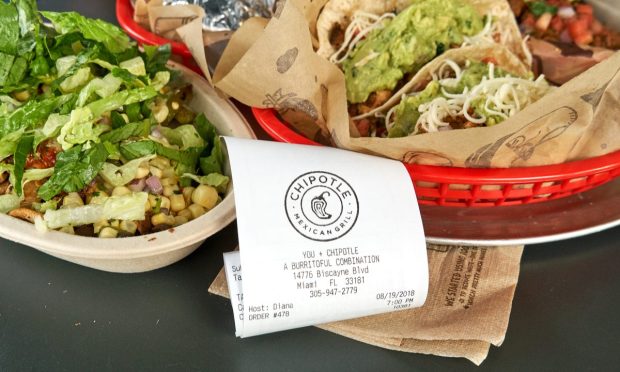Leaning on Loyal Customers, Chipotle Raises Prices at Nearly Twice the Rate of Inflation

Chipotle Mexican Grill’s recent price increase successes are a testament to the affinity the brand has built with its fans. In December, the Newport Beach, California-based fast-casual giant, which has nearly 3,000 locations across five countries, increased prices by 4%, leading to a total year-over-year increase of about 10%.
For context, food price inflation for food-away-from-home (restaurant) purchases was up 6% year over year in December 2021, according to data from the United States Department of Agriculture’s (USDA’s) Economic Research Service’s (ERS’s) Food Price Outlook. As such, Chipotle increased prices at about 1.7X the rate of the industry as a whole.
On a call with analysts Tuesday (Feb. 8) discussing Chipotle’s fourth-quarter 2021 results, chief executive officer Brian Niccol stated that, according to internal data, these price hikes have not impacted customer loyalty.
Related news: Digital Order-Ahead Accounted for About 20% of Chipotle’s Sales in Q4
“After we take pricing, we really do analyze what happens to transactions,” he said. “And the good news is, we have so much data now with our loyalty database that we’re able to understand, are there any behavioral impacts from what we’re seeing? And we see very little resistance there.”
Certainly, consumers are still purchasing from the brand, or at least they were doing so throughout the fourth quarter —comparable restaurant sales grew 15% year over year in the period. The brand’s first-quarter results will give a clearer picture of whether these pricing actions have affected sales, and if so, how.
As it stands, Niccol argues that Chipotle’s “customization,” “access,” and “frankly, the quantity” available at the restaurant sufficiently differentiate the brand to offer plenty of leeway when it comes to actions such as these pricing initiatives.
“Pricing usually has something to do with your relative options … We’re kind of in our own space, and we’re very fortunate to be in that space,” he said. “And there’s a lot of headroom, from what we can tell. And I really hope we never have to use all of it, but we’ll be judicious. And when we need to, we will.”
Granted, given that the company is drawing the data on which it is basing these analyses from its loyalty program members, these measures likely do not serve as a proxy for the brand’s customer base as a whole. After all, a group of people who have opted in to be rewarded for their loyalty is far from an unbiased sample when it comes to measuring consumer loyalty.
Still, the fact that all these people — Chipotle Rewards has over 26.5 million members, though the company did not disclose how many of those are active — continue to buy at a comparable rate even when prices soar is a testament to the power of a loyalty program.
“Digital engagement mechanisms to keep close to the guests are paramount,” Andrew Robbins, CEO of Paytronix, told PYMNTS’ Karen Webster in a recent interview. “So, a strong loyalty CRM program, online ordering, those are the twin pillars of a good strategy. And we see this every single time there’s a downturn.”
See also: Restaurants Lean on Loyal Customers to Navigate Omicron, Inflation Impact
